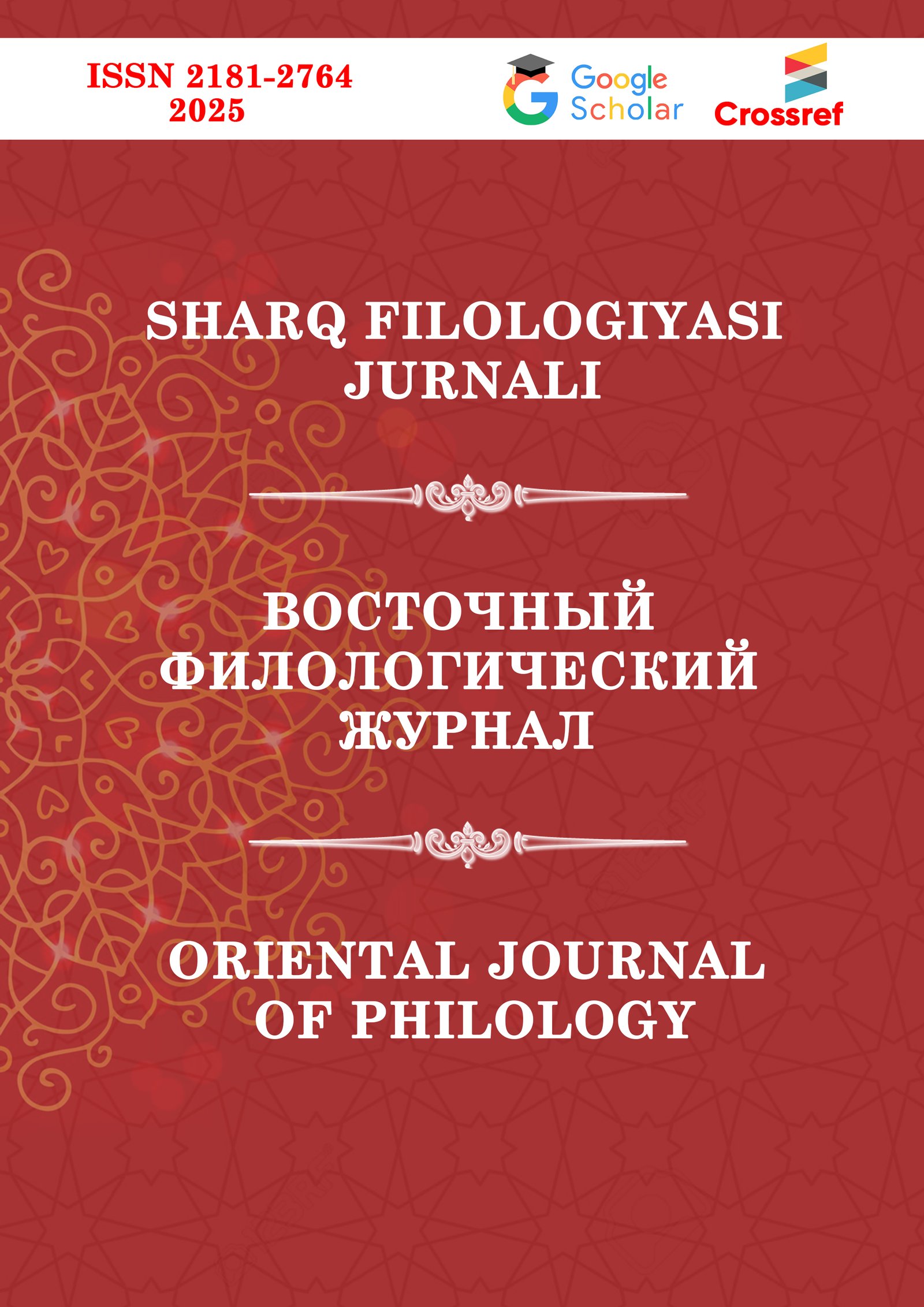 Articles
| Open Access |
DOI:
https://doi.org/10.37547/supsci-ojp-05-03-31
Articles
| Open Access |
DOI:
https://doi.org/10.37547/supsci-ojp-05-03-31
AL-HAKIM AT-TIRMIDHI AND ARABIC LEXICOLOGY
Ibrahim Usmanov ,Abstract
The works of Hakim Tirmidhi contain very interesting information on lexicology. In an environment where sciences are considered as a whole, Tirmidhi strives to get to the deep meaning of every word. To do this, he connects Arabic word formation with the internal meaning of the word, distinguishes between original and non-original words, and draws conclusions that letters carry a semantic load in the word. He also claims that there are no synonyms in the Qur'an and that every word is unique, even if it has a similar meaning.
Keywords
ilm аl-khuruf, Arabic word formation, Koran, Arabic language, polysemy, synonymy, heart, ego.
References
Baraka A. (2014). Al-Hakim at-Tirmidhi and his theory of God’s friendship Аl-Hakim at-Termiziy va nazariyyatuhu fi-l-vilaya. – Cairo: Maktaba Vahba. (In Arabic)
Belkin V. (1975). Arabic Lexicology. Аrabskaya leksikologiya.– Moskow: Moscow State University. (In Russian)
Jeyoushi V. (2005). Introduction to the book of Al-Hakim at-Tirmidhi “Al-Furuq”. Al-Muqaddima li kitab “al-Fururq”. – Adjuza: Iman. (In Arabic)
Salih Ҫift. (2008) Al-Hakim at-Tirmidhi and understanding the Sufism. Hakîm Tirmizî ve tasavvuf anlayişi.– Stanbul: Insan yayinlari, 2008. (In Turkish)
Sami Nasr. (1981). Introduction to the book of Al-Hakim at-Tirmidhi “Ilm al-avliya”. Al-Muqaddima li kitab “Ilm al-Avliya”. – Cairo: al-Maktaba al-hurriya. (In Arabic)
Sviri, Sara. (2002). Words of power and the power of words // Jerusalem Studies in Arabic and Islam. №27. Рр. 204-244. (In English).
Fakhriddinov Zafar. (2019). The role of Hakim Termizi in the scientific and spiritual environment of Central Asia and his contribution to the science of interpretation and lexicography. Hakim Termiziyning Markaziy Osiyo ilmiy-maʼnaviy muhitidagi oʼrni hamda tafsir va lugʼat ilmiga qoʼshgan hissasi // Light of Islam. Islom ziyosi, № 4. Pp. 45-54. (In Uzbek)
Catalogue of Navadir al-Usul. (2015). Faharis Navadir al-usul. – Jidda: Dar al-minhaj. Т.V. (In Arabic)
Shimmel A. (2012). The World of Islamic Mysticism. Mir islamskogo mistitsizma. – Moscow: Sadra. (In Russian).
Khaydar J. (2019). The significance of the linguistic origin according to Al-Hakim Al-Tirmidhi. Dalalat al-asl al-lugʼaviy inda al-Hakim at-Tirmidhi (fi kitabihi Tahsil nazair al-Qurʼan) // Magazine of College of Education for Girls. № 10. Pp. 289-313. (In Arabic).
Al-Hakim Al-Tirmidhi. (2005). Differences and prevention of synonyms. Аl-Furuq va manʼ at-taraduf. – Adjuza: Iman. (In Arabic).
Al-Hakim Al-Tirmidhi. (1981). Science of the saints. Ilm al-avliya. – Cairo: al-Maktaba al-Hurriya. (In Arabic).
Al-Hakim Al-Tirmidhi. (2008). Rare Origins. Navadir al-Usul. – Cairo: Maktaba Imom al-Buxoriy. Т.I. (In Arabic).
Al-Hakim Al-Tirmidhi. (2015). Rare Origins. Navadir al-Usul. – Jidda: Dar al-minhaj. Т.I. (In Arabic).
Al-Hakim Al-Tirmidhi. (1969). Collecting Quranic equivalents. Tahsil nazair al-Qurʼan. – Cairo: Matbaa saada. (In Arabic).
Ibrahim Anis. (1914). Introduction for the book of Abu Hatim ar-Razi “The Book of Adornment in the Islamic Arabic Words”. Al-Muqaddima li kitab “az-Ziyna”. – Sana: Markaz al-buhus va-d-dirosot, 1994. (In Arabic).
Article Statistics
Downloads
Copyright License
Copyright (c) 2025 Ibrahim Usmanov

This work is licensed under a Creative Commons Attribution 4.0 International License.

